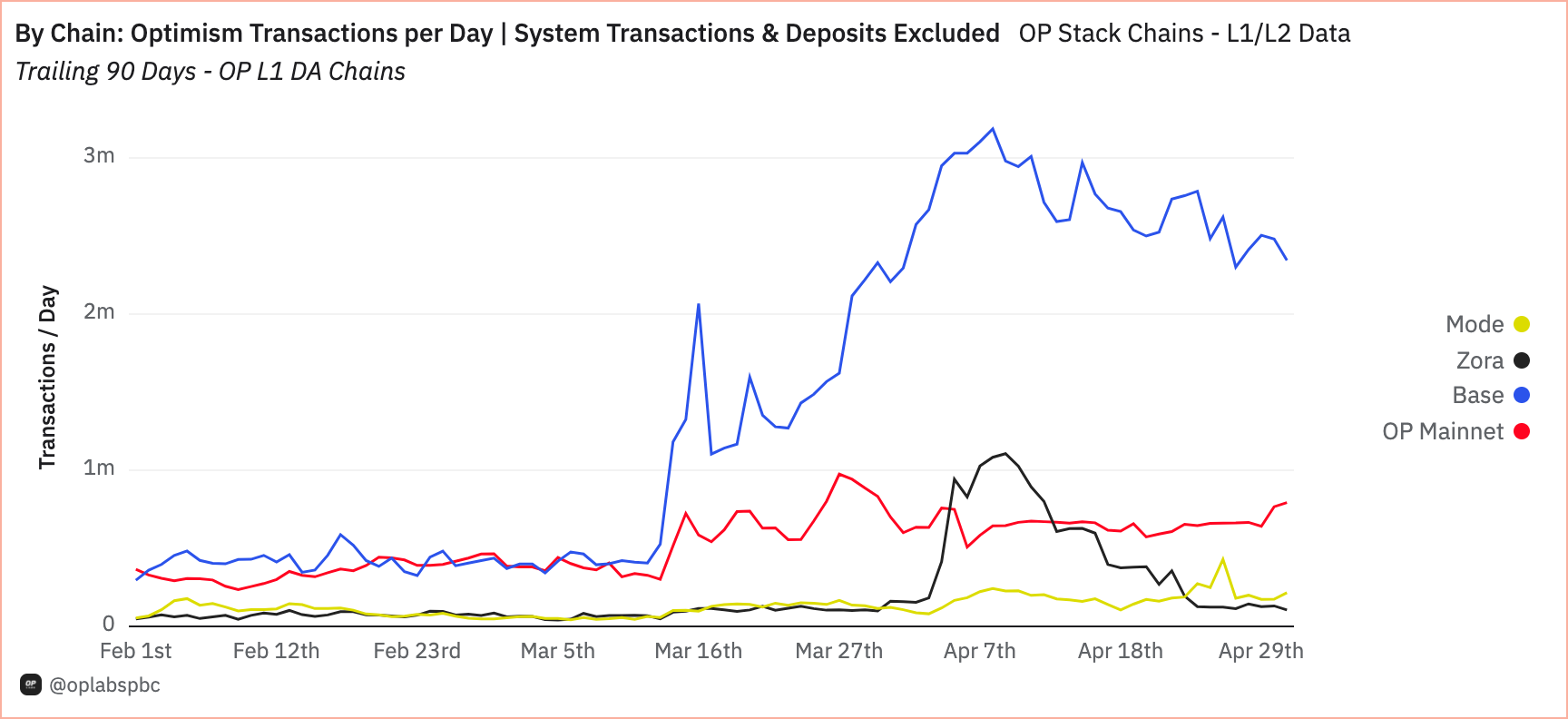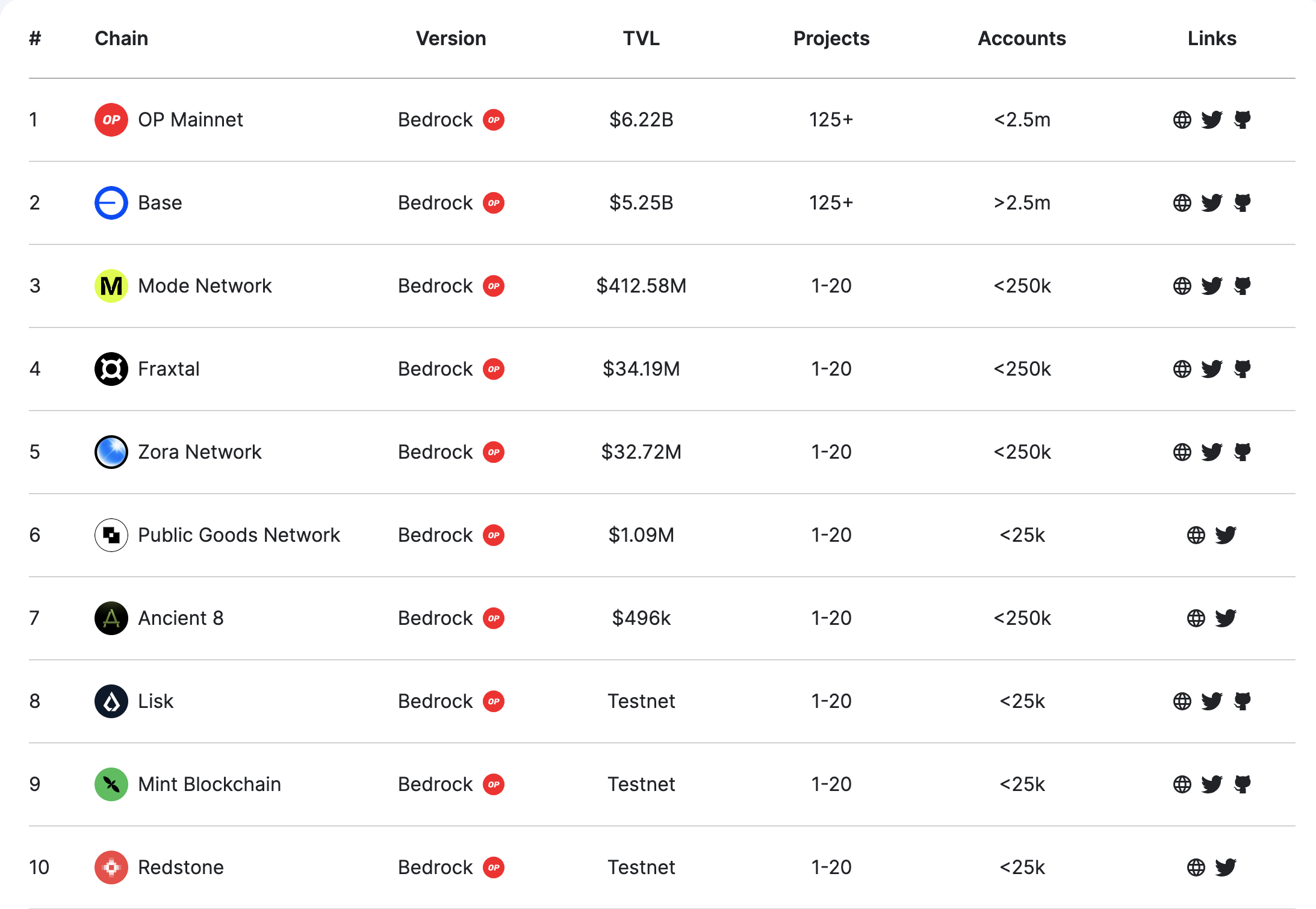What is a superchain? Supersizing as a scaling technique
The idea behind the Optimism-based superchain is to create a scaling system for Ethereum projects.

For the past several weeks we’ve been circling various issues related to how blockchains can scale (or limitations to scaling, like block size constraints).
We’ve also talked about how scaling can impact transaction fees, which erodes the underlying utility of onchain activities, especially for things like smaller payments.
Blockchain developers and builders have been talking about these issues for years. From the beginning, easy scaling was always viewed as a massive tradeoff when building with blockchain.
Overall security and maintaining a trustless environment come at the cost of speed.
The tradeoffs were mostly tolerable in the early days. But as the demand for onchain apps and services starts to grow, so too does the need to figure out a way to scale.
Enter the idea for a superchain.
A superchain is a chain of chains or more accurately a network of networks that leverages standards and methods to make layer two protocols interoperable and also make layer two operations easy to integrate with a layer one blockchain.
The idea is that specialty protocols can be designed to work within the superchain ecosystem to do things like handle transactions faster and cheaper. At the same time, the common traits of superchain protocols make it possible to reuse tooling and code so that everything built on the superchain leverages the authority and security of the underlying layer of one blockchain.
Why is this happening now?
The technical reason is that a project called Optimism has created a hub based on Optimistic rollups, or a system of scaling that enables handling most transaction data offchain and then using Ethereum for final settlement and record-keeping.

READ MORE ABOUT MODULAR BLOCKCHAIN DESIGN
Builders operating within Optimism’s hub use what is called the “OP stack” or a system of building that operates using Optimism's open-source playbook.
Beyond the OP stack as a common feature among all of the projects building under the superchain umbrella, another reason this idea is taking off right now is because of the rapidly growing demand for onchain apps and services.

A network of networks
A basic metric of a blockchain like Ethereum is how many transactions it can handle a second. Why is this important? Well, network congestion leads to all kinds of issues.
Maybe the biggest issue is poor user experience resulting in something like a routine transaction taking a long time to complete or costing some ridiculous sum of money.
In other words, if blockchain networks can’t scale or can’t handle a heavy transaction load, then their overall utility becomes greatly diminished.
A traditional financial network like Visa can reportedly handle 24,000 transactions per second. Until the recent upgrades to Ethereum including EIP 4844 and the introduction of blobs, which makes it easier to integrate modular scaling solutions like Optimism’s superchain, Ethereum’s transaction rate was something like 20 to 30 transactions per second.
The need to increase Ethereum’s transaction rate, while reducing gas or transaction fees and maintaining a high level of security and decentralization is a big driver of the development of the superchain idea.
An easier way to visualize this is that a layer one like Ethereum is like an interstate highway. Currently, there are regular tolls and the traffic can get stacked up. Layer twos are like building a network of surface streets to alleviate congestion and cut down on costs.
The superchain idea is creating a system of surface streets that all work together and make sense in an organized way, rather than just having an ad-hoc back roads kind of system.
The goal is that new projects launching and using the OP stack can get a head start. They can piggyback on existing work. This is similar to the earlier ethos of token standards, which launched a wave of innovation and decentralized applications on Ethereum.

Cost and efficiency are the difference makers between the earlier token standard model and the Optimism superchain model.
By building on Optimism most of the heavy lifting involved in a transaction (data availability) happens via an optimistic rollup, which increases the number of transactions while also making the entire process more cost-effective.
A big piece of why the superchain model works is that it leverages modular building and processing, which means that the entire lifecycle of an individual transaction doesn’t necessarily need to happen onchain.
Horizontal integration to foster growth and efficiency
Figuring out a model for scaling Ethereum with modular protocols could be game-changing for the blockchain space. It’s part of the reason there is so much energy, excitement, and investment happening within the Optimism ecosystem.
A16z Makes $90 Million Private Purchase of Optimism’s OP Token
— Laura Shin (@laurashin) April 30, 2024
.@a16z is betting on the future of Optimism — and specifically on its Ethereum L2 tech stack.@michael_bodley reports
Read more: https://t.co/MQud0MhCNB pic.twitter.com/5SmP6C9SJb
Building with modular protocols to create layer twos that can work together within a system is like horizontal integration as opposed to vertical integration.
With earlier token standard models, the architecture required building one layer on top of the next (they are called layer one, layer two, etc.) eventually stacking technologies in a vertical structure until you achieve the goals of security, functionality, cost, and scale.
But the superchain model flips the architecture a little bit. Rather than stacking tech layers on top of the main chain, modular rollups, like Optimism, make it possible for projects to share data sideways.
This enables a flatter or more horizontal structure. Although, it doesn’t eliminate the need to continue to build up and add layers. But still, I think the horizontal integration analogy still holds.
By now you might be wondering: will this all work?
Conceptually, the idea of building tools to scale layer one blockchains sounds great.
But there are risks. One of the biggest risks is overall security and integrity. If we get back to the basics of why blockchain exists and how it works we remember that speed and high transaction volume are always the tradeoff for security and decentralization.
Security issues are a major concerns are a major concern for any layer two project. Building a superchain is complicated and the more complicated something becomes the more potential there is for things to break.
And the risks are not theoretical. Just this week, Optimism was alerted to a vulnerability in their test net, which would allow an attacker to edit the chain’s history, which presents major problems for a technology that is supposed to be immutable.
Another big concern or issue is what decentralization looks like at scale on a superchain. Having a federated group of completely decentralized projects with clear governance models is one thing. But a grouping of corporate-backed entities building onchain or creating corporate governance by proxy feels like a completely different thing.
Zooming out, the idea of a superchain is kind of like a digital commons. Builders trade some autonomy for efficiency and some security for scale. Likely there will be benefits to building in a digital commons, just like there will likely be costs too.